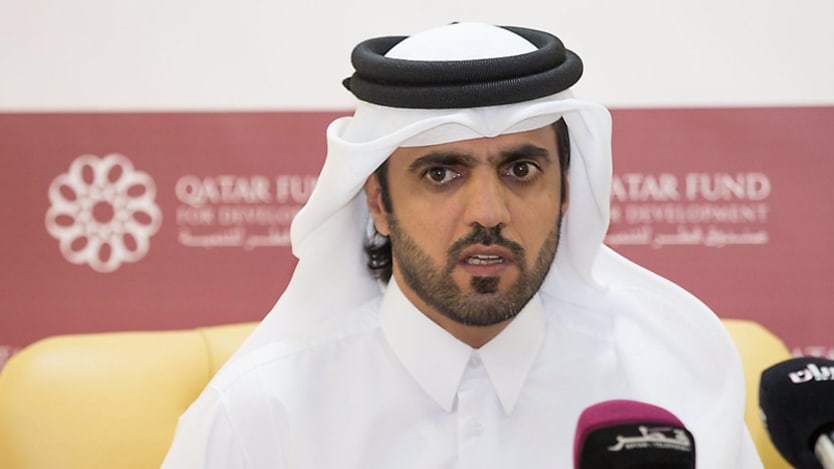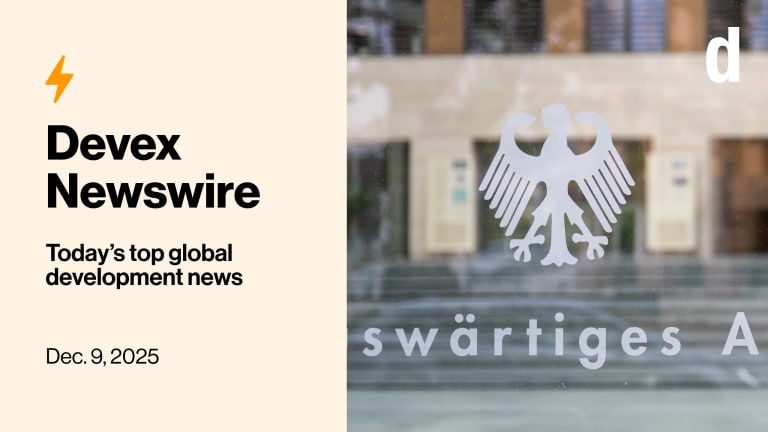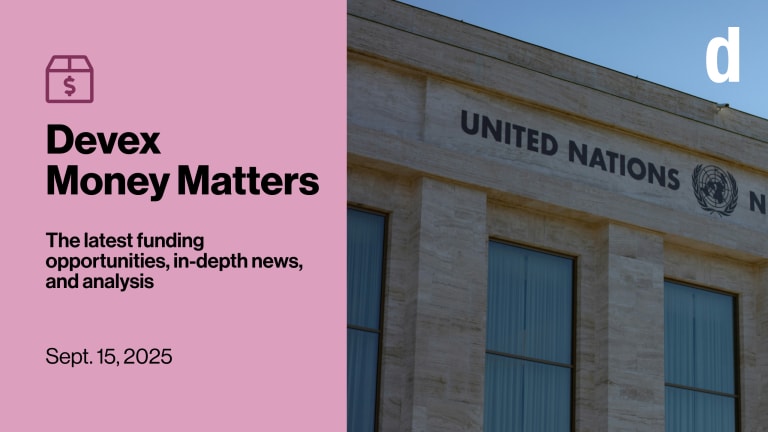
LONDON — Qatar’s budget for official development assistance has grown dramatically since the Arab Spring in 2010, jumping from about $10 million a year to a few hundred million dollars in just three years, mostly focused on the Middle East region. Now approaching $1 billion per year, Qatar is strengthening its ties with the multilateral development system, most recently with a $3 million contribution to the World Food Programme, announced at the Aid & Trade London conference on April 26.
As Qatar grew its stake in the global aid community, the country came to believe that the humanitarian system needs a profound rethink, according to one of Qatar’s aid leaders, Khalifa bin Jassem Al-Kuwari.
The director of Qatar’s main aid vehicle, the Qatar Fund for Development, Al-Kuwari told Devex that while the United Nations “is doing a very big job on the ground, when it comes to conflict itself, more could be done on prevention, because these conflicts are going on far too long.”
He continued: “I know there are discussions within the U.N. system about increasing efficiency, better coordinating with other funding sources, so I know there are many things we can do to improve the system; it’s a work in progress.”
But Al-Kuwari stressed that weaknesses in the sector do not mean donors should disengage, adding that “without the U.N. system, there are many things we simply would not be able to do.” That is why Qatar is investing rather than walking away, he said; and given its place in a complex region, engagement with the entire aid toolbox — both old and new — is more important than ever.
Devex spoke to Al-Kuwari about the future of Qatari aid on the sidelines of the Aid & Trade London conference last week. The conversation has been edited for length and clarity.
What is next for the Qatar Fund for Development? Will it continue to grow?
“Qatar has done well locally in the education sector; with small-to-medium enterprises; and working with youth — so we built our strategy on that.”
— Khalifa bin Jassem Al-Kuwari, director general of the Qatar Fund for DevelopmentThe fund started in 2015, and at that point we based our strategy on the strengths of the state of Qatar and we asked: ‘What are we good at?’ Qatar has done well locally in the education sector; with small-to-medium enterprises; and working with youth — so we built our strategy on that. Of course, there are other issues that are important too, but those are the sectors where we feel we can help better.
The majority of our funding started in education. We fund major international initiatives including Education Above All. They have just celebrated the achievement of reaching 10 million out-of-school children [a target set six years ago by EAA’s founder] and we’re very proud of this achievement.
We are also now very focused on QUEST, through which we target 400,000 Syrian refugees for education. We’re talking to the Bill & Melinda Gates Foundation, and we’ve recently made a shift toward multilateral financing, for many reasons: Easy access, better coordination, scaling, building up expertise. There are many situations where we think it’s just easier to work through the multilaterals, though some projects in education we still want to get to directly ourselves or through other partnerships.
We’re working to increase our efficiency. We are a very small team and we are growing, but we’re planning to stay relatively small.
At the Aid & Trade conference, you called for humanitarian reform. What would you like to see change about the way the humanitarian sector operates?
There needs to be more coordination between agencies and better transparency, but I believe this is a work in progress.
There are so many things we could just never have done, and could never do, without the U.N. system. If you were to do it without the U.N. system, it would be even more inefficient, so the best way is to work with the U.N. agencies. That’s why we’re increasing our partnerships. We are working closely with the U.N. Development Programme, for example, and with the new heads of the agencies. These [heads] have a lot of new ideas that are challenging to us, but honestly that’s good. Achim Steiner [of UNDP] is one visionary; Mark Lowcock also, and he has a very tough job in reforming the Office for the Coordination of Humanitarian Affairs.
You’re in a tough position, tasked with promoting human rights, education, and civil society in a country and a region that has struggled with those things. How do you navigate and balance that?
“As the Qatar Fund for Development, we try to stay away from politics. We don’t mix whatever’s happening in the region with development.”
—In Qatar, we’ve seen such improvement and progress in the last 15 years, it’s been an unbelievably positive shift in all aspects: Education, human rights … This is work in progress for any nation, looking both inside and out. As the Qatar Fund for Development, we try to stay away from politics. We don’t mix whatever’s happening in the region with development.
For example, we haven’t stopped our dedicated work in some conflict-affected countries in the region. In Yemen, we work through UNICEF, and we also have a couple of direct projects, but we haven’t stopped. So, politically, we don’t mix these things. We think that’s important first for our credibility — and second, because we work for the benefit of people.
As the Qatar Fund for Development gets more involved with the various mechanisms and instruments for financing development, what are you most excited about? What are the financial trends in aid flows that you’re hoping to become known for?
Innovative financing has unlocked a lot of money for development and humanitarian work — not only through the private sector, but also through debt financing facilities, which have unlocked a lot of money as well. It’s not only about development money — we need to have investment.
Without reliable economic cycles in [low-income] countries, grant money won’t matter. This is part of the discussion we had in London with the Gates Foundation: How can we do more on the innovative financing side to create more investment? We have our blended finance facility in the health sector, and that’s [one step], but I would like to see the development banks and development financing facilities be able to lend more easily, to put this money to use.
That’s what we’re looking at now: How to make sure development money can enable an economically stable environment so that investors can come and invest.








